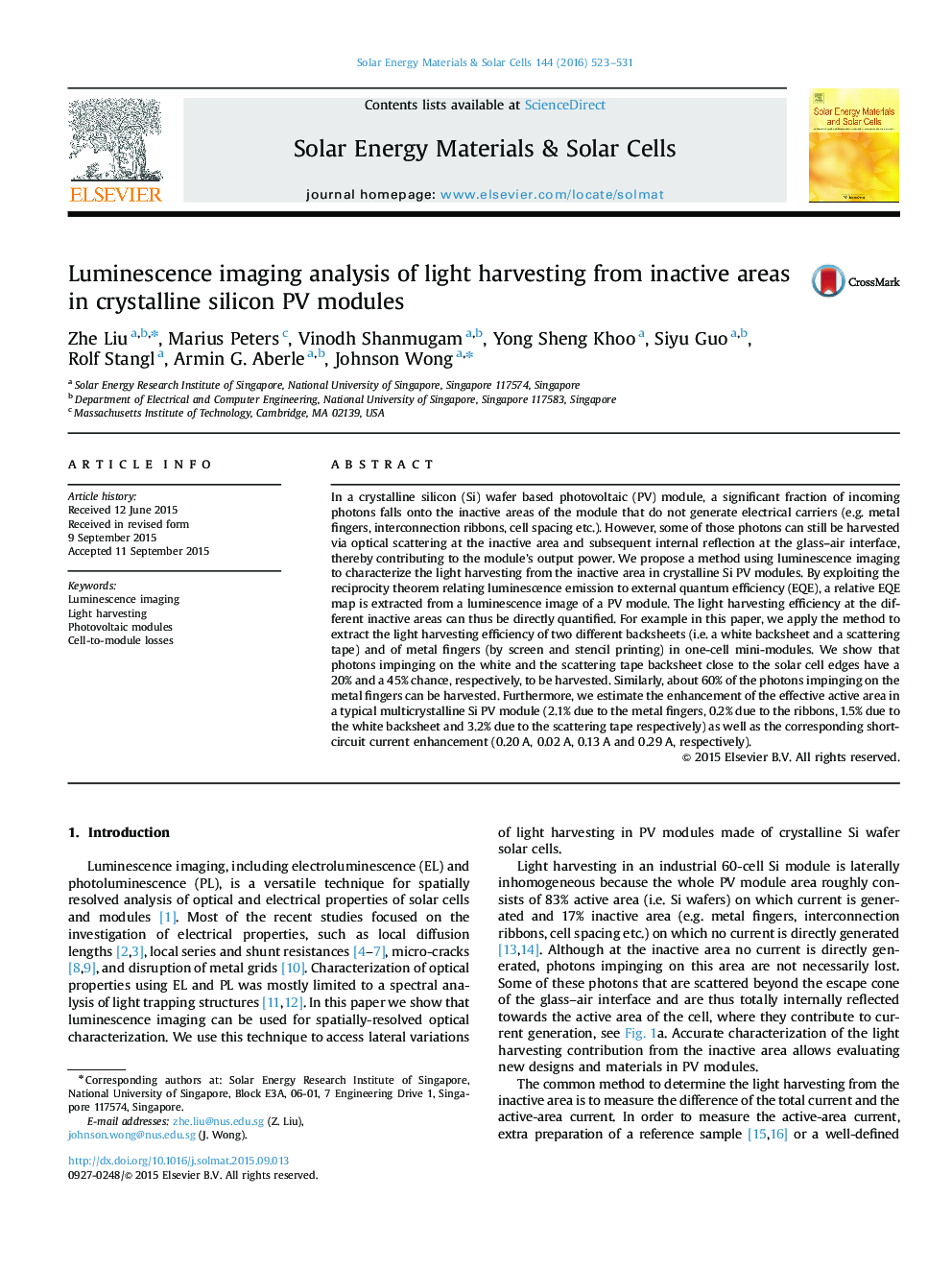| Article ID | Journal | Published Year | Pages | File Type |
|---|---|---|---|---|
| 6534952 | Solar Energy Materials and Solar Cells | 2016 | 9 Pages |
Abstract
In a crystalline silicon (Si) wafer based photovoltaic (PV) module, a significant fraction of incoming photons falls onto the inactive areas of the module that do not generate electrical carriers (e.g. metal fingers, interconnection ribbons, cell spacing etc.). However, some of those photons can still be harvested via optical scattering at the inactive area and subsequent internal reflection at the glass-air interface, thereby contributing to the module's output power. We propose a method using luminescence imaging to characterize the light harvesting from the inactive area in crystalline Si PV modules. By exploiting the reciprocity theorem relating luminescence emission to external quantum efficiency (EQE), a relative EQE map is extracted from a luminescence image of a PV module. The light harvesting efficiency at the different inactive areas can thus be directly quantified. For example in this paper, we apply the method to extract the light harvesting efficiency of two different backsheets (i.e. a white backsheet and a scattering tape) and of metal fingers (by screen and stencil printing) in one-cell mini-modules. We show that photons impinging on the white and the scattering tape backsheet close to the solar cell edges have a 20% and a 45% chance, respectively, to be harvested. Similarly, about 60% of the photons impinging on the metal fingers can be harvested. Furthermore, we estimate the enhancement of the effective active area in a typical multicrystalline Si PV module (2.1% due to the metal fingers, 0.2% due to the ribbons, 1.5% due to the white backsheet and 3.2% due to the scattering tape respectively) as well as the corresponding short-circuit current enhancement (0.20Â A, 0.02Â A, 0.13Â A and 0.29Â A, respectively).
Related Topics
Physical Sciences and Engineering
Chemical Engineering
Catalysis
Authors
Zhe Liu, Marius Peters, Vinodh Shanmugam, Yong Sheng Khoo, Siyu Guo, Rolf Stangl, Armin G. Aberle, Johnson Wong,
